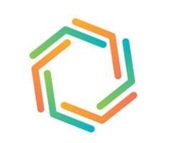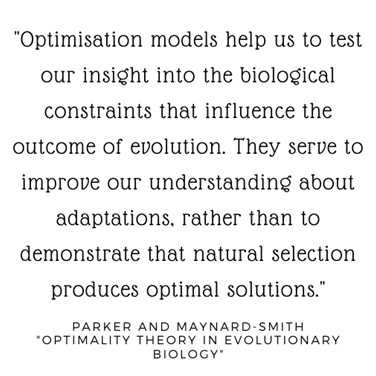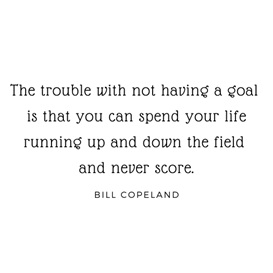A Coaching Model By Ioana Domnica Grigore, Business Coach, ROMANIA
 A coaching model designed to help solopreneurs reach their optimum potential in the entrepreneurial life.
A coaching model designed to help solopreneurs reach their optimum potential in the entrepreneurial life.
The Solopreneur Institute defines a solopreneur as: “An entrepreneur who prefers the freedom to run a business without any w-2 employees.”
Here are some examples of solopreneurs: a therapist, a coach (like yourself), an artist, an artisan, etc.
Therefore this model is MAINLY FOR YOU!
As you might have guessed already, the main struggle for the solopreneur is, well, being solo. A solopreneur handles the business by himself and very often gets overwhelmed. Being the one-man show gets him stuck into a single perspective with no one to show him other sides of the story.
Based on my researches, the solopreneurs mainly have the following pain points:
- can’t scale the business due to lack of resources
- are not confident about their knowledge and skills (many limiting beliefs)
- don’t possess the know-how to run a business (mainly the know-how is related to the services and products they sell)
- lack of business structure and strategy
Why OPTIMUM?
According to Collins Dictionary, optimum is defined as:
- (substantive) a condition, degree, amount, or compromise that produces the best possible result;
- (adjective) most favorable or desirable; best; optimal.
The word started to be used heavily in 1890 in biology to denote a condition or a result that is favorable or best for a particular living entity. Optimality represents the property of a system to maximize or minimize some function under given constraints. In the realm of biology, natural selection leads to exquisite functional life forms all abiding by the laws of physics and chemistry yet show remarkable adaptation to the surrounding conditions.

Therefore, OPTIMUM is about testing your assumptions and adapting (as in maximizing or minimizing certain skills) to the internal and the external constraints such as:
- lack of resources;
- lack of know-how;
- limiting beliefs;
- internal conflicts;
- lack of strategy and structure, etc.
By extrapolation, this model is used in coaching for generating that respective condition that produces the best possible outcome for the solopreneur.
The model is designed to be used each time the solopreneur feels trapped into a circumstance that no longer serves him/her and that doesn’t produce the optimum in business.
The model is continuous and, hopefully, it becomes an entrepreneurial lifestyle.
OPTIMUM Model Explained

OPTIMUM Model Consists of 7 Steps:
O – Open exploration around what you are struggling with and Observe your current situation.
This is the moment when the client is looking with a so-called “child’s curiosity” to his current situation.
The coach helps with the exploration and works to establish a space that generates neutrality when analyzing the facts. This will help the client have the bigger picture while avoiding getting into the small details.
As a solopreneur, the client is heavily involved in the daily operational tasks therefore he needs the time and the space to objectively observe the current situation.
P – Challenge your Present and Perceptions and change your Perspective.
With a neutral image in mind, the solopreneur can now challenge the present situation and his perceptions. When the challenge is complete, the client should change his perspective.
The coach helps the client expand through exploration of various scenarios and changing perspectives.
By now, the client should be able to switch between scenarios and choose the most suitable one.
T – Set your Target
Once the client has envisioned a new scenario, he should be able to set a target, an objective for what he wishes to accomplish.
As Copeland said, without a target, there is no scoring.
 I – Set your Itinerary
I – Set your Itinerary
By now the client has already envisioned the new scenario, has set a target, and now it’s the moment for planning.
The coach helps the client draw a robust action plan to reach the target, a plan with milestones, deadlines, and key results.
M – Make it happen
This is the moment when the client gets into action. He has the plan and he knows where he needs to get to, therefore the coach’s role is to be his cheerleader.
According to the client’s needs, this is the moment when the coach can keep the client accountable and can celebrate with each checked milestone.
U – Update your plans by assessing results
During all this time the circumstances might change. The client gets a lot of insights from his activity, understands his limitations, and can act upon them.
This is the moment when the client reflects upon the learnings and adjusts his plans.
As we live now in a very dynamic world, our role is to constantly adapt through trial and error. Once the client gets new insights and learnings, he should be able to adapt, to adjust the sails.
The coach helps with exploration and reflection while encouraging adjustment.
This is the moment of creativity and innovation.
M – Reach your Maximum
Reaching the maximum is an implicit result of the entire model. As optimum says, the client’s efforts should get him to the best possible result.
In the end, this model creates a healthy mindset with continuous adjusting, trying, failing, and learning. All on repeat.
Coach’s Role in the OPTIMUM Model
During the coaching process, the client might be tempted to skip steps to reach an optimal environment faster. Unfortunately, this is not how the model works.
The coach will guide the client through each step by being the client sounding board. Through a strong coaching agreement between the client and the coach on session goals, the coach will challenge the client in each step of the model to guarantee the client has a full understanding of every aspect without missing a relevant step.
Learn How to Create Your Own Coaching Model
Your Coaching Model reflects your values,
philosophies and beliefs and must communicate who you will coach
and the problems you will solve.Read more about creating your coaching model
References
https://openwetware.org/
https://www.solopreneurinstitute.com/
https://www.collinsdictionary.com/